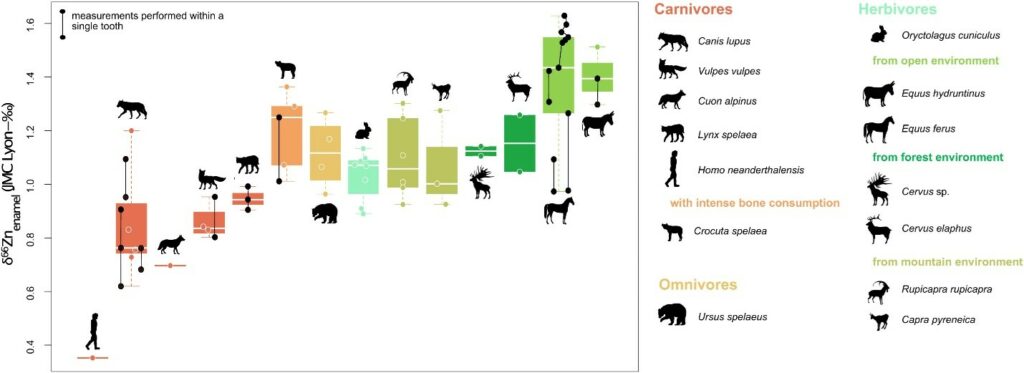By Aislinn Sanders

What Neanderthals ate has been an ongoing debate in research communities. A new study on Neanderthal teeth has attempted to provide an answer to this question.
Led by Dr. Klervia Jaouen, a researcher at the Observatory Midi Pyrénées in Toulouse, France, the study analyzed zinc and other isotopes in Neanderthal dental enamel from the Gabasa site in Spain. In this type of analysis, the lower the proportion of zinc isotopes found in the studied bones the more likely the animal is to be a carnivore. This research is the first instance of zinc isotope analysis of Neanderthal specimens.
The study spanned the analysis of 65 enamel samples from 43 teeth of 12 different taxa, including cave bears, Neanderthals, dhole, rabbits, and elk, all living in the same time period. Only four of the dental remains analyzed came from Neanderthals. The results found that, for this population of Neanderthals, they had the lowest zinc isotope level of all the carnivores analyzed. Broken bones at the site also suggest that Neanderthals may have consumed the bone marrow of their catches. These findings, however, cannot be extrapolated to other populations of Neanderthals, as evidence of omnivorous, largely vegetarian, and marine diets exist for other geographically distinct groups of Neanderthals.
This study far from provides absolute evidence, closing the book on this argument. The researchers hope they can continue their experiment at other sites. The full article can be read here (https://www.pnas.org/doi/10.1073/pnas.2109315119#fig02).